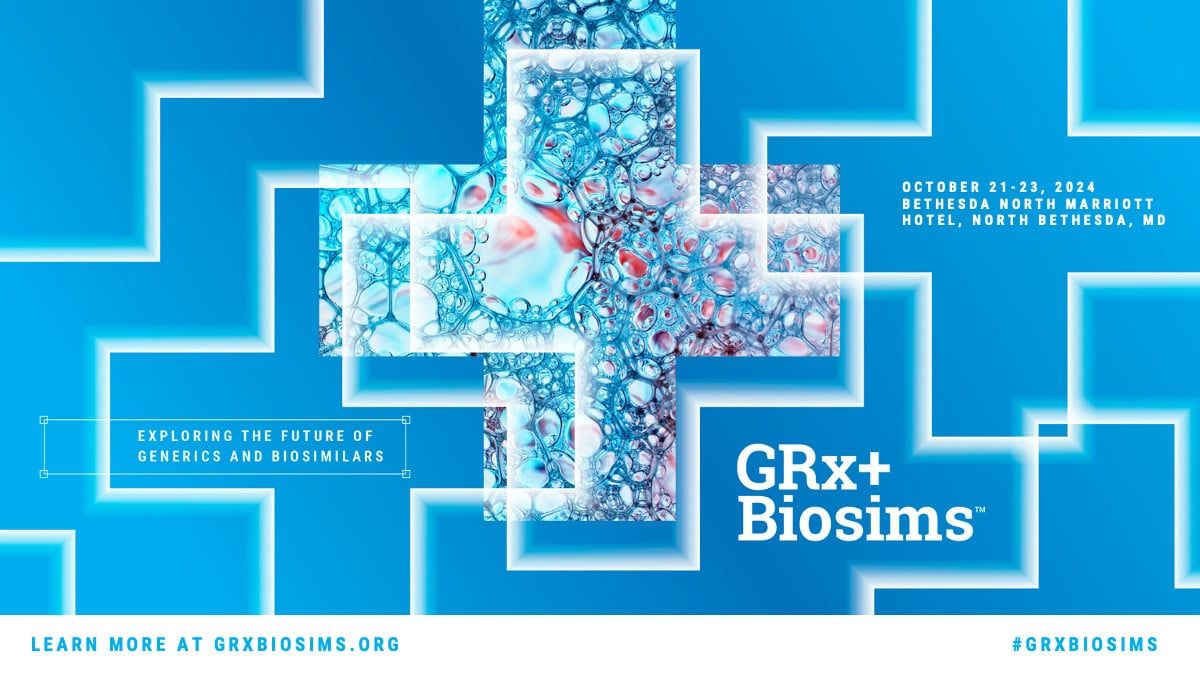News
Article
Exploring the Complexities of Biosimilars and Interchangeability
Author(s):
Key Takeaways
- Interchangeability impacts payer incentives, provider perceptions, and biosimilar adoption rates, with formulary status and complexity as barriers.
- Regulatory and legislative solutions are needed to unify biosimilar standards and improve access, with Congress increasingly viewing biosimilars as "generics 2.0."
A panel of industry experts discussed the complexities of biosimilars and interchangeability, emphasizing the challenges in adoption, the need for regulatory and legislative solutions, and the importance of education to combat misinformation.
At the GRx+Biosims conference, a panel of industry experts discussed key issues surrounding biosimilars and interchangeability, raising the question of whether interchangeability designations have an impact on adoption anyway.
The GRx+Biosims conference was held from October 21 to 23 in Rockville, Maryland. | Image credit: GRx+Biosims

During the discussion, Heather Pace, PharmD, senior clinical manager at Vizient, highlighted her experience with biosimilar transitions in the payer space, while Sam Leo, PharmD, senior director of US biosimilar operations at Teva Pharmaceuticals, emphasized the importance of interchangeability in the evolving US market. Additionally, Adam Colborne, JD, associate vice president of Congressional affaisr at the Academy of Managed Care Pharmacy, addressed both challenges and emerging Congressional support for biosimilars, and Michelle Cope, director of federal and state pharmacy and regulatory affairs at the National Association of Chain Drug Stores, underscored interchangeability's role in enabling retail pharmacy substitutions.
The panel explored pharmacy and manufacturer challenges. Cope noted the practical difficulties pharmacies face in dispensing biosimilars, while Leo and Pace discussed how interchangeability influences payer incentives, provider perceptions, and overall adoption rates. The panelists linked slow biosimilar uptake to formulary status and the complexity surrounding interchangeability designations.
“While a payer may be sophisticated enough to truly understand the science behind interchangeability, their concern is if they're going to move against an innovative product, how fast can they make that transition and minimize the pushback they’re going to receive from patients and providers. Interchangeability is a tool they can use to do that and the fact that it's not prevalent across all products adds a layer of complexity,” explained Leo.
They also examined CMS’s new Part D rule on biosimilar formulary substitutions. Colborne highlighted potential impacts on the commercial sector due to Medicare's inflationary rebates, while Cope emphasized the importance of seamless implementation to prevent care delays. The panelists also noted challenges posed by state-level prescriber notifications for interchangeable substitutions.
Regarding regulatory and legislative solutions, the panel discussed the FDA’s revised guidance on interchangeability and debated whether regulatory adjustments alone are sufficient or if legislation is needed to remove distinctions between biosimilars and interchangeable products. Leo emphasized incentives for manufacturers, while both Pace and Colborne supported legislation to unify biosimilar standards.
Interchangeability is a US regulatory designation that allows for a biosimilar to be substituted in place of a reference product at the pharmacy level without waiting for physician approval. | Image credit: JOURNEY STUDIO7 - stock.adobe.com

“We're increasingly seeing Congress think about biosimilars in a new way, where it was maybe an afterthought in the past. But I think the term that I've heard some folks use [to describe biosimilars] is generics 2.0, and I think that's how Congress is starting to think about them. And so, we're maybe not quite at the crescendo yet, but I think we're getting there from a [Capitol] Hill perspective,” said Leo.
Cope echoed this sentiment: “Legislation, from my perspective, is absolutely necessary, and that's something that we would hope to see move forward to improve access."
The discussion then shifted to education and combating misinformation. Colborne noted his organization’s efforts in educating providers, while Pace described advisory services designed to help institutions navigate biosimilar adoption. Leo and Cope emphasized the importance of information from trusted sources like the FDA and state pharmacy associations to increase understanding and confidence in biosimilars.
When discussing effective state models for biosimilar substitution, Colborne praised certain states as exemplary, while Cope, Leo, and Pace pointed out the complexity of navigating various state laws and stressed the need for clear pharmacy benefit managers’ roles and incentives.
On the topic of private label biosimilars, Colborne and Leo saw them as a positive development but underscored the importance of manufacturer involvement. Pace noted that private labels are influencing formulary decisions and shifting the market away from reference products.
In their closing remarks, Pace called for continued education to overcome biosimilar adoption obstacles, Leo highlighted biosimilars’ cost-saving potential, and Cope advocated for policy changes to simplify and streamline biosimilar integration across pharmacies.
Leo concluded, “The fact of the matter is, because today, most payers, while they may cover biosimilars, are only doing it parity positions for the most part. And if you're a provider or a patient, you don't have the savings incentive or any other incentive to move to biosimilars. So, they haven't had that familiarity yet with interchangeable biosimilars or really any other biosimilars. Until we get through that doorway, I think it's going to be uphill battle of educating to increase that approval.”
Reference
Colborne A, Cope M, Leo S, Pace H. Biosimilars: does interchangeability really matter? Presented at: GRx+Biosims; October 21-23, 2024; Rockville, Maryland.




